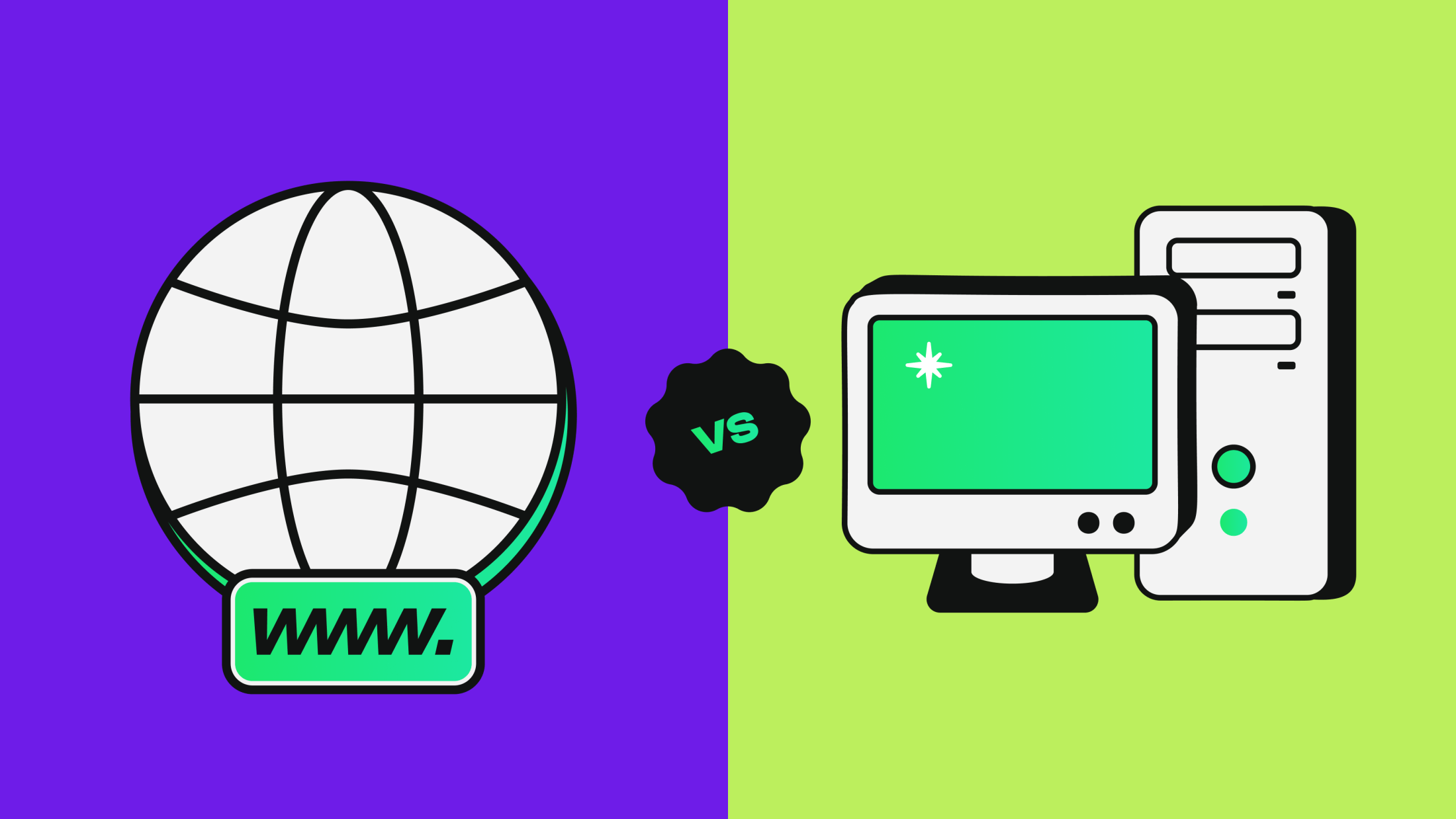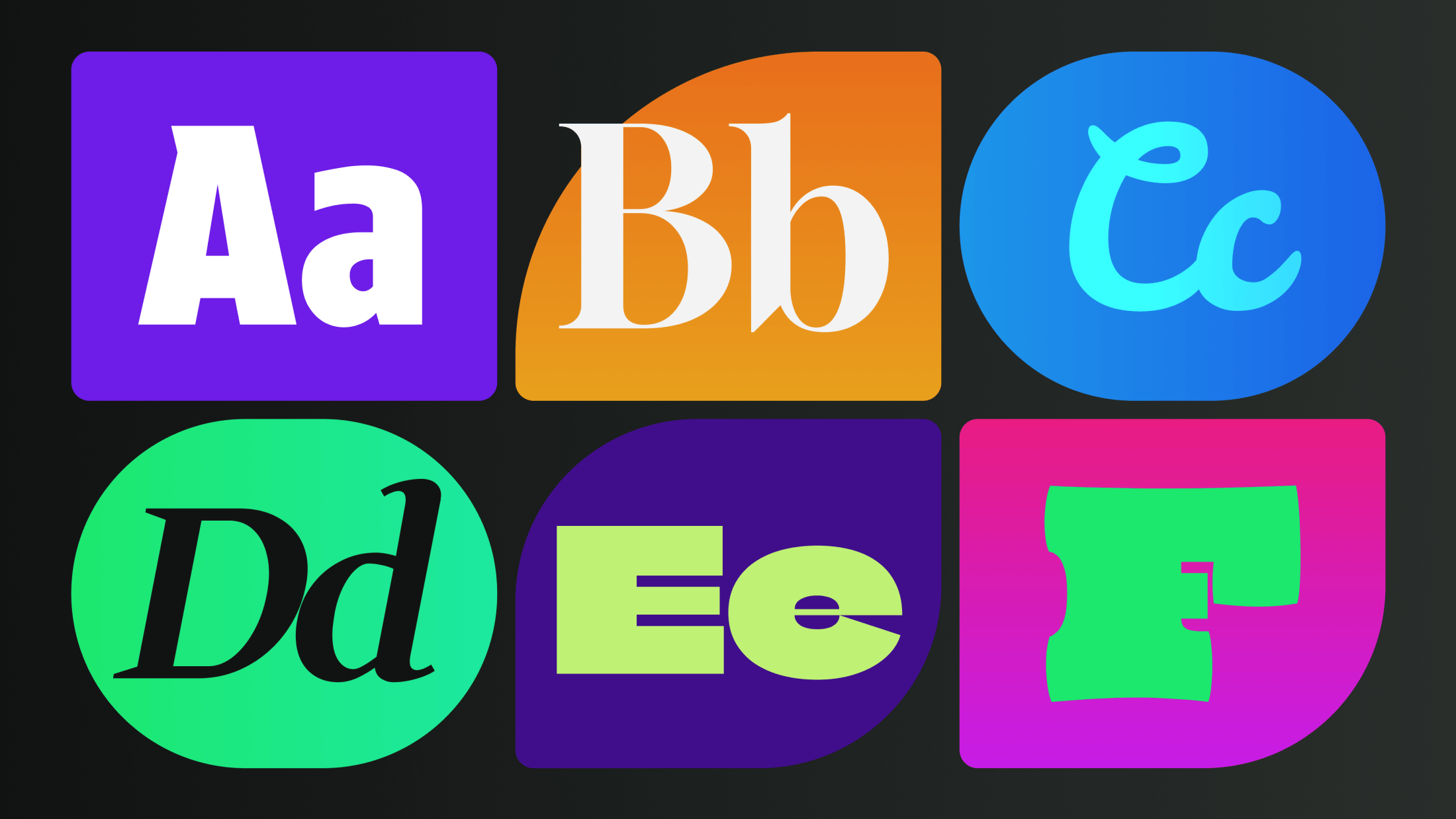The world of webfonts has changed a lot more than you may have realised. Practically any font you can imagine is available to use on the web – you’re not limited to the small handful of the old guard of ‘web safe’ fonts you might be familiar with, such as Arial, Verdana and Times New Roman.
However, you can’t just upload your font files to your website and use them willy-nilly! a lot of them (but not all) require a specific license to use.
If you’ve undergone a rebrand and want your website’s fonts to match or even if you just fancy a new look on your current website, this article is for you.

Webfont vs Desktop Licenses
Desktop licenses and webfont licenses are completely separate from each other (unless you purchased both licenses under the same package).
If you’ve purchased a font before, you might be familiar with desktop licenses. A desktop license permits you to use a font on your computer, usually for use in graphics software. When purchasing, you usually specify a number of computers which the font will be used on. This type of license does not permit you to use your font on your website.
A webfont license, however, is made for exactly this purpose. The files provided are usually a lot more compressed than their desktop counterparts, so that the end user can load your font faster when they visit your website.
A good way to tell if you have a desktop or webfont license is by the extensions of your font files. Desktop licenses tend to by OTF (OpenType Format) or TTF (TrueType Format) files, whereas webfont files are usually WOFF2 or WOFF (Web Open Font Format) files. WOFF2 is the ideal format as it compresses better, but WOFF files are still acceptable!

Purchasing a Webfont License
When purchasing a webfont license, there are a variety of pricing structures to be aware of. Most licenses tend to be a one-off purchase, but you’ll often be asked some questions which affect pricing, such as:
- The number of domains the font will be used on (myfirstwebsite.com and mysecondwebsite.com would count as two domains, but a subdomain structure like first.mywebsite.com and second.mywebsite.com might only count as one)
- Your website’s average monthly page views OR unique visitors. A good rule of thumb is to check the past 12 months in your analytics software to see your peak monthly visitors, and add around 15% to that number – after all, you’ll probably want to grow the number of visitors to your site in future!
Webfont Subscriptions
Some licenses are renewed at a regular interval instead of a one-off – make sure to double check the license before you purchase! Some fonts are exclusive to cloud services such as Adobe Fonts and Hoefler & Co.’s Cloud Typography service, which is something to bear in mind when deciding on new fonts for your brand.
If you wish to use a font on the Adobe Font platform, the website owner will need either an active Adobe Creative Cloud subscription (the one that comes with all the apps like Photoshop, Illustrator, InDesign, etc.). As of 2019, agencies cannot use their own Adobe CC subscriptions to serve webfonts on your behalf – you must have your own subscription.
However, If you already have an Adobe CC license, this can prove to be a great option as you won’t have to pay a penny more!

Free-to-use Webfont Licenses
There are plenty of websites and services these days that provide webfonts for free, often under the SIL Open Font License or GNU General Public License. Here are just a couple of examples:
- Google Fonts is by far and away the most popular choice, and includes plenty of the fonts you might see in your day-to-day. It gets updated frequently with new fonts, and is often a good first port of call depending on your requirements.
- FontShare is an alternate site that has a lot of solid choices available, although they tend to be more on the stylistic side
- Fontesk is a good choice for finding fonts that are slightly off the beaten path. Just be careful to check the licenses of the fonts you download – many are free, but not for commercial use.
If you’ve downloaded a font for free, you should double check that the font is licensed for commercial use. Oftentimes, demo versions of a font or limited sets are offered on the basis that the font is for personal use only. If you wish to use one of these fonts commercially, you’ll either need to seek out a commercial paid version, or reach out to the font creator to agree on a license.
Why Purchase a Webfont when I could have these for free?
Free webfonts are a perfectly viable option for a lot of businesses, especially if your brand isn’t particularly focused around typography. You might even want to consider using system fonts to provide a particularly fast and lightweight experience for your users, if that is your priority.
If brand recognition is a key goal of your business, you should really be aiming to use your brand fonts in all media, including your website. Paid fonts tend to stand out more than free counterparts often because they’re not used as much – the cost of the license is like a VIP pass! Paid-for fonts tend also to be of a higher quality than free options (though not always), which can benefit your users’ experience (when used properly).
Need help acquiring a webfont license, or deciding on a font in the first place? UP Hotel Agency is happy to assist – our design team can collaborate with you and make recommendations to get your fonts purchased and installed on your website!
![What the Webfont August 2025 [Blog Banner 16_9]](https://adao.co.uk/wp-content/uploads/2025/07/What-the-Webfont-August-2025-Blog-Banner-16_9-1920x1080.png)
![The Power of Local SEO [Blog Banner 16_9]](https://adao.co.uk/wp-content/uploads/2025/07/The-Power-of-Local-SEO-Blog-Banner-16_9-1024x576.png)




